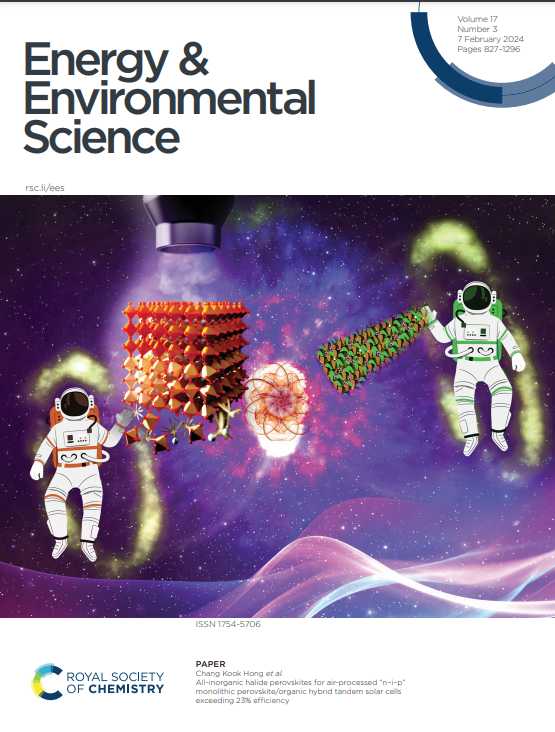Molecular Order Manipulation with Dual Additives Suppressing Trap Density in Non-Fullerene Acceptors Enables Efficient Bilayer Organic Solar Cells
IF 32.4
1区 材料科学
Q1 CHEMISTRY, MULTIDISCIPLINARY
引用次数: 0
Abstract
The order of molecular aggregation at the donor-acceptor interface strongly affects the charge generation and extraction properties, determining the performance of organic electronic devices. Herein, we focused on bilayer organic solar cells and selected a combination of solid- and solvent-additives, namely 1-chloronaphthalene (CN) and trans-bis (dimesitylboron) stilbene (BBS), to tune the acceptor’s molecular arrangement in the bilayer active layer structure. When CN alone was added, the molecular orientation in the acceptor film changed from face-on to edge-on, and the crystallinity of the thin film significantly increased owing to the J-aggregation of the acceptor. While dual additives were used, a flocculent morphology was attained, leading to further increased crystallinity and improved order of the molecular aggregations, thus reducing the trap states in the acceptor layer. As a result, using dual additives resulted in decreased trap-assisted charge recombination and enhanced charge extraction, hence an excellent fill factor and optimum efficiency of 19.32%. The findings elucidate that morphology optimization using dual additives to strengthen the molecular arrangement order, which is a practical approach for high-performed bilayer organic solar cells.求助全文
约1分钟内获得全文
求助全文
来源期刊

Energy & Environmental Science
化学-工程:化工
CiteScore
50.50
自引率
2.20%
发文量
349
审稿时长
2.2 months
期刊介绍:
Energy & Environmental Science, a peer-reviewed scientific journal, publishes original research and review articles covering interdisciplinary topics in the (bio)chemical and (bio)physical sciences, as well as chemical engineering disciplines. Published monthly by the Royal Society of Chemistry (RSC), a not-for-profit publisher, Energy & Environmental Science is recognized as a leading journal. It boasts an impressive impact factor of 8.500 as of 2009, ranking 8th among 140 journals in the category "Chemistry, Multidisciplinary," second among 71 journals in "Energy & Fuels," second among 128 journals in "Engineering, Chemical," and first among 181 scientific journals in "Environmental Sciences."
Energy & Environmental Science publishes various types of articles, including Research Papers (original scientific work), Review Articles, Perspectives, and Minireviews (feature review-type articles of broad interest), Communications (original scientific work of an urgent nature), Opinions (personal, often speculative viewpoints or hypotheses on current topics), and Analysis Articles (in-depth examination of energy-related issues).
 求助内容:
求助内容: 应助结果提醒方式:
应助结果提醒方式:


